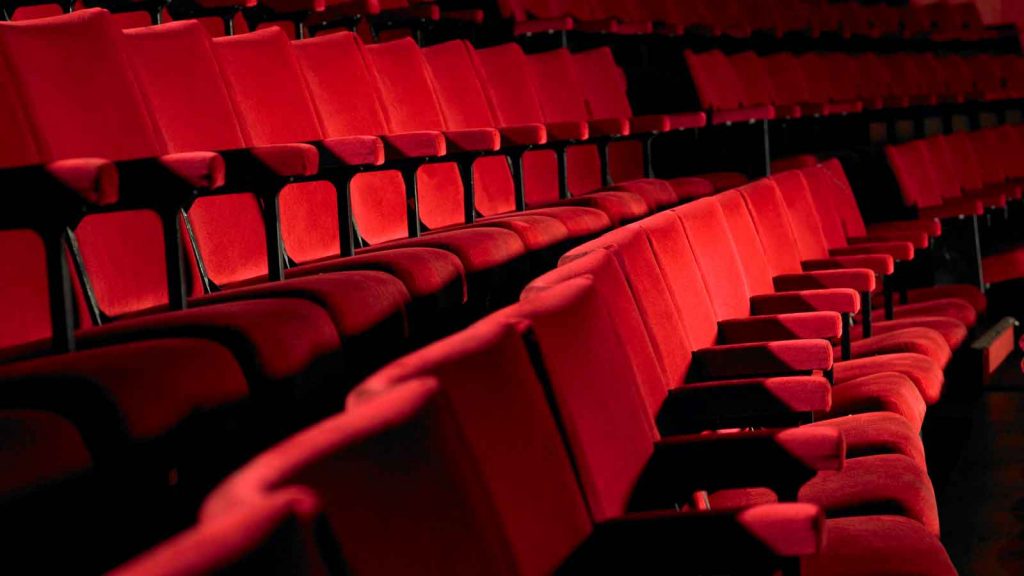What’s your earliest movie memory?
Mine’s going to the cinema to see Flubber, starring the late, great Robin Williams. I don’t remember much about the film, but I can recall the excitement, anticipation and comfort of the cinema experience, an experience many believe is coming to an end.
At this year’s Academy Awards ceremony, Netflix claimed an impressive 24 nominations, reigniting the debate, will the rise of streaming services mean the fall of cinemagoing?
To predict cinema’s future, we must examine its past.
Since its invention in the early 1900s, cinemagoing has been a much loved and adored activity amongst Australians.
In the early 1900s the Australian cinema industry boomed, as families, friends and lovers flooded in night after night to enjoy an exciting new concept. By the time 1921 rolled around, the cinema was the most popular form of entertainment.
The late ’20s ushered in ‘the talkies’, advancing storytelling, capturing imaginations and driving fanfare. Cinemagoing reached new heights in 1928 with a record-breaking 187m tickets sold! A figure that would never be repeated.
When the depression hit, it hit the cinema industry hard, but admissions rose again when war erupted across Europe in 1939. Audiences went back to movie theatres throughout the ’40s and early 50s to bask in the bright, bubbly and infectious golden age of cinema, escaping the grim reality of post-war life.
Audiences eventually grew weary of this unrealistic interpretation of life and dwindling ticket sales followed.
Adding to industry woes was the introduction of TV to Australian homes in 1956. Audiences could now enjoy AV entertainment without leaving the comfort of their living rooms, drastically hurting admissions. In fact, cinema attendance almost halved from 1957- 1962, forcing many to close their doors.
The effects of TV were felt around the world but a group of talented, new age American directors including Coppola, Spielberg, and Scorsese did their best to disrupt the trend. These young, progressive graduates borrowed from experimental European filmmakers to reflect 70’s counterculture and bring life back to the movies. Their innovative techniques, original stories, and honest films brought youths back to cinemas, albeit not to its former glory.
During the 80’s video players found their way into 63% of Australian homes, allowing people to enjoy movies at home. Of course, this was content previously screened in cinemas and had long, 6-month waits between theatrical and home video release. The release window ensured cinemas continued operating, averaging 35.8m admissions per year during this decade.
When the 90’s hit, technological advancements made video players much more affordable and therefore common, but cinema attendance continued to rise, averaging 64.9m tickets a year.
The 2000s saw new threats emerge, including the invention of DVD players but this platform was still only offering dated movies. Piracy, on the other hand, was not.
Instead of paying for movie tickets, pirates could illegally download and watch the same content screened in cinemas at home with the click of a mouse. Piracy became a global epidemic, threatening to finally put an end to cinemagoing once and for all but against all odds it survived, again. People rallied, laws were changed, and cinema finished the decade, averaging 87.8m admissions per year throughout the 2000s.
In the 2015 streaming service, Netflix came to Australia, allowing audiences to legally watch a huge catalogue of movies and TV shows online. Despite the allure of staying home every single day, audience numbers increased by 15% from 2014 to 2015.
At this time Netflix was only producing TV content, creating Emmy nominated series’ like Orange is the New Black, Narcos and House of Cards. Fast forward to this year’s Academy Awards and the TV producers were the highest nominated movie distributor, validating them as a legitimate moviemaking heavyweight. +
In 2020, Disney, Stan, Prime and Apple join Netflix in offering audiences award-winning, first-run content online, marking a decade of unparalleled choice. Even with all this choice, cinema begins the year up 6% YOY, suggesting yet another cynic defying era for the cinema business.
Throughout history, cinema has faced countless competition, threatening its existence. It’s had numerous peaks and troughs, a never-ending cycle of unpredictability. What has remained constant is the cinema’s ability to endure, to fight fads and rise back into popularity. Surely this perseverance is enough to instill a little bit of hope, if not confidence in the future of cinemagoing?
Anyway, I’m off to the cinema.

